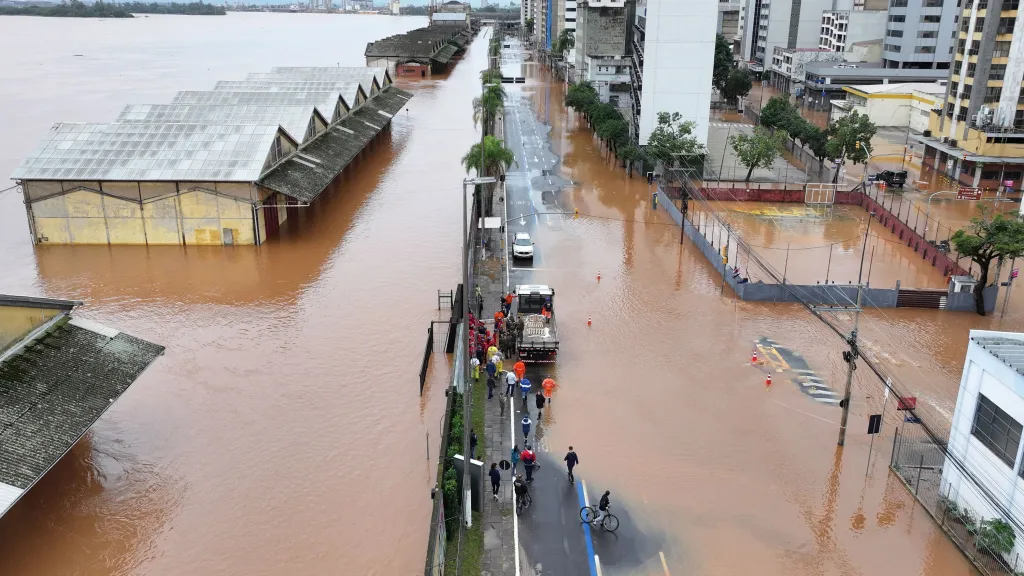Rains returned to Rio Grande do Sul on Friday as the death toll from historic floods in Brazil’s southernmost state reached 126, according to local authorities, climbing from 113 earlier in the day.
Storms and floods battering the state, home to some 10.9 million people, have also displaced almost 340,000 while another 141 people are still unaccounted for, civil defense said.
Heavy rains have caused several rivers and lakes in the region to hit their highest levels ever, while floods blocked streets and disrupted logistics, triggering a shortage of essential goods in certain areas.
Almost two million people have been affected so far, civil defense said in their latest update on Friday evening.
Weather forecaster MetSul said that most Rio Grande do Sul cities should experience rains on Friday, adding there is a high risk of storms. They should persist until Monday, it added in a statement.
The state is at a geographical meeting point between tropical and polar atmospheres, which has created a weather pattern with periods of intense rains and others of drought.
Local scientists believe the pattern has been intensifying due to climate change.
In Canoas, one of the most affected cities near the state capital Porto Alegre, over 6,000 people were staying in a college gymnasium turned into a shelter.
Aparecida de Fatima Fagundes said she had been struggling to sleep there as she could not stop thinking about “the worst day” of her life.
“I keep remembering people saying ‘help’, ‘help’,” she said. “It was horrible.”
The state government said more than 385,000 people had no water services, while some 20 cities were out of telecom services.
On Thursday, the federal government announced a package of aid measures to help Rio Grande do Sul, which included bringing forward payment of social benefits and providing cheaper credit to farmers and companies.
Governor Eduardo Leite said earlier this week that initial calculations indicate that Rio Grande do Sul would need at least 19 billion reais ($3.68 billion) to rebuild from the damage, which has extended into farm areas around the capital.




